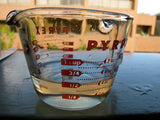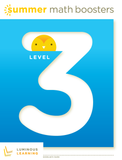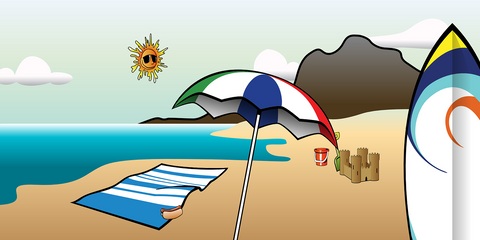10 Ways to Make Summer Meaningful
Summer Learning Loss
According to the National Summer Learning Association, most children lose up to 2 months of math skills over the summer. Many students test more poorly at the end of the summer than the beginning, demonstrating a loss of learning. This cumulative effect impacts their academic success year after year. Each September, teachers spend precious classroom time reviewing last year's concepts, which gives them less time to teach grade-appropriate material.
This loss of learning is easily preventable. While children should enjoy their summer vacations and spend plenty of time resting after a long school year, they can also keep their math skills intact. There are many fun ways to practice math at home over the summer.
Fun Math Activities
Here are 10 ideas to fill the summer with fun, meaningful math activities!
1) Are you going on a family road trip? Have you children record the license plate numbers they see. The younger children can add the numbers in the license plates and the older children can multiply them. Your children can also record the types of cars that pass, categorized by color, model, size, etc. They can use the data to create a bar graph. Want to take this activity even further? Turn your children into the teacher! Have them create questions based on their graphs and give this quiz to their parents.
 2) Involve your children in cooking and baking. This is a great activity to practice reading and interpreting fractions as they follow the recipe. Are you scaling a recipe bigger or smaller? Have your children multiply or divide the fractions to scale the recipe accordingly. Ask questions as you cook, such as, "We just measured 1/3 cup flour and 1/4 cup baking soda. Did we use more flour or baking soda? Which fraction was larger?"
2) Involve your children in cooking and baking. This is a great activity to practice reading and interpreting fractions as they follow the recipe. Are you scaling a recipe bigger or smaller? Have your children multiply or divide the fractions to scale the recipe accordingly. Ask questions as you cook, such as, "We just measured 1/3 cup flour and 1/4 cup baking soda. Did we use more flour or baking soda? Which fraction was larger?"
3) Find opportunities to count, especially for younger kids! Counting is a very important skill to master in order to succeed at later math topics. Find different ways to count to 100 using household objects. For example, count out 100 paper clips one by one. Count out 100 sunflower seeds in groups of 2. Count out 100 rubber bands in groups of 5. Count out 100 toothpicks in groups on 10. Count out 100 buttons in groups of 20. Demonstrate how many different ways you can reach 100.
4) Just like younger kids can practice counting and skip counting, older kids can practice reciting their times tables. Have them skip down the street while counting as they skip: "3, 6, 9, 12, 15..." Take one of their favorite songs and try to change the lyrics, using the times tables: "5 times 1 is 5, 5 times 2 is 10, 5 times 3 is 15..." Or challenge your child to create an original song, creating a rhythm and beat using the multiplication facts.
 5) Do you have a garden? Have your children track plant growth from week to week. They can measure each plant, using a ruler to measure the height to the nearest centimeter (or for older kids, fraction of a centimeter). They can track the plant's growth on a line graph, recording how much it grows from week to week. Want to add an estimation element? Have your children estimate how much it will grow each week or month. Compare their estimation to the actual results and discuss how close their estimation was.
5) Do you have a garden? Have your children track plant growth from week to week. They can measure each plant, using a ruler to measure the height to the nearest centimeter (or for older kids, fraction of a centimeter). They can track the plant's growth on a line graph, recording how much it grows from week to week. Want to add an estimation element? Have your children estimate how much it will grow each week or month. Compare their estimation to the actual results and discuss how close their estimation was.
6) Use shopping or restaurant trips as an opportunity to practice adding money amounts and calculating change. Waiting in line at the grocery store? Have your children calculate how much the groceries will cost. Paying your bill at the restaurant? Have your children calculate how much change you should receive back. Buying an ice-cream from the ice-cream truck? Have your child add coins to pay for their ice-cream.
7) Have younger children practice sorting and categorizing items. For example, if you're at the beach, collect small items such as pebbles and shells. Discuss how you can categorize in many different ways- by type, size, color, etc. Your children can practice putting their collection of items into different piles based on these characteristics.
8) Choose a location you visit often, whether a camp, pool, friend's house, etc. Find the distance you travel from home to the location using google maps. Have your child convert this distance from miles to yards to feet. Younger kids can also practice converting between measurements. Have your child make a list of common household objects of all different sizes- a broom, coffee maker, shampoo bottle. Measure the object in feet and convert feet to inches, or measure the object in centimeters and convert to millimeters.
 9) Rainy day? Stay inside and have a family fun night! Board games are great ways to make math learning fun. Many of the board games you probably already have in your house can be used to reinforce math skills. For example, Monopoly teaches how to count money and make change, Connect Four and Checkers teach patterns, and Battleship teaches coordinate graphs. Even games like Snakes and Ladders and Sorry are useful in reinforcing counting and one-to-one correspondence as children roll the dice and move the counter a set number of spaces. You can also buy board games specifically designed to practice math skills, such as these.
9) Rainy day? Stay inside and have a family fun night! Board games are great ways to make math learning fun. Many of the board games you probably already have in your house can be used to reinforce math skills. For example, Monopoly teaches how to count money and make change, Connect Four and Checkers teach patterns, and Battleship teaches coordinate graphs. Even games like Snakes and Ladders and Sorry are useful in reinforcing counting and one-to-one correspondence as children roll the dice and move the counter a set number of spaces. You can also buy board games specifically designed to practice math skills, such as these.
 10) If you want a more formalized but still fun way to keep your children's math skills intact, check out our Summer Math Boosters! Each workbook includes 30 lessons that cover the major math topics from the school year. They are designed with built-in supports that boost confidence and encourage success. Learn more about our Summer Math Boosters here.
10) If you want a more formalized but still fun way to keep your children's math skills intact, check out our Summer Math Boosters! Each workbook includes 30 lessons that cover the major math topics from the school year. They are designed with built-in supports that boost confidence and encourage success. Learn more about our Summer Math Boosters here.
Are there ways that you make math learning a fun part of summer vacation? Share your ideas below!


